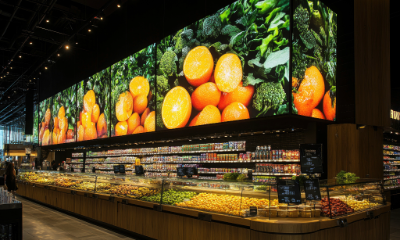Top 5 Benefits of Integrating Interactive Signage in Retail
Top 5 Benefits of Integrating Interactive Signage in Retail
In today’s competitive retail landscape, businesses are constantly seeking innovative ways to engage customers and drive sales. One such solution that has gained significant traction in recent years is the integration of interactive signage in retail stores. Interactive signage refers to digital displays that allow customers to interact with the content, providing a more engaging and personalized shopping experience. Let’s explore the top five benefits of integrating interactive signage in retail.
Enhanced Customer Engagement and Interaction
One of the primary benefits of interactive signage in retail is the enhanced customer engagement and interaction it offers. Traditional static signage can often go unnoticed or fail to capture the attention of customers. However, interactive signage grabs the attention of shoppers by providing an immersive and interactive experience. According to a study by Intel, interactive digital signage can increase customer engagement by up to 60%.
Interactive signage allows customers to actively participate in the shopping process, making it more enjoyable and memorable. For example, a clothing store could incorporate interactive mirrors that allow customers to virtually try on different outfits or accessories. This not only engages customers but also helps them make more informed purchase decisions. By providing an interactive experience, retailers can create a deeper connection with their customers, leading to increased loyalty and repeat business.
Increased Sales and Conversion Rates
Another significant benefit of integrating interactive signage in retail is the potential to increase sales and conversion rates. Interactive signage can be strategically placed throughout the store to guide customers towards specific products or promotions. For instance, a grocery store could use interactive displays near the produce section to showcase recipes and suggest complementary products, thereby increasing the likelihood of additional purchases.
According to a study by Nielsen, interactive signage can increase sales by up to 33%. By leveraging interactive displays to showcase product features, benefits, and customer reviews, retailers can effectively influence purchase decisions. Additionally, interactive signage can facilitate upselling and cross-selling opportunities by suggesting related products or offering personalized recommendations based on customer preferences. This not only boosts sales but also improves the overall customer experience.
Improved Brand Awareness and Recall
Integrating interactive signage in retail stores can significantly improve brand awareness and recall. Interactive displays provide a unique opportunity for retailers to showcase their brand personality and values in an engaging manner. By incorporating interactive elements that align with the brand’s identity, retailers can create a memorable and immersive experience for customers.
For example, a sports apparel store could have interactive displays that allow customers to virtually try on different team jerseys and share their photos on social media. This not only promotes the brand but also encourages customers to become brand advocates by sharing their experiences with their network. According to a study by Digital Signage Today, 71% of consumers recalled seeing a digital sign in the past month, highlighting the effectiveness of interactive signage in increasing brand recall.
Streamlined and Personalized Shopping Experience
Lastly, integrating interactive signage in retail stores can streamline and personalize the shopping experience for customers. Interactive displays can provide real-time information about product availability, pricing, and promotions, eliminating the need for customers to search for assistance or wait in line. This not only saves time but also enhances customer satisfaction.
Furthermore, interactive signage can be tailored to individual customer preferences and behaviors. By leveraging data analytics and customer insights, retailers can deliver personalized recommendations and offers through interactive displays. For instance, a beauty store could use interactive screens to suggest skincare products based on a customer’s skin type and concerns. This level of personalization not only improves the shopping experience but also increases the likelihood of repeat purchases.
In conclusion, integrating interactive signage in retail stores offers numerous benefits, including enhanced customer engagement and interaction, increased sales and conversion rates, improved brand awareness and recall, and a streamlined and personalized shopping experience. As technology continues to advance, interactive signage will undoubtedly play a crucial role in shaping the future of retail, providing retailers with a competitive edge and customers with a more immersive and enjoyable shopping experience.

